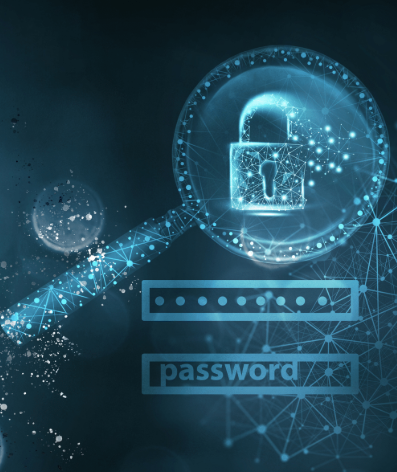Turning Security Gaps Into Strength: Prioritizing Cyber Risk Management in a Digital Era
- 124 Views
- admin
- 01/17/2025
- Cybersecurity
In today’s digitally-driven environment, organizations must rethink how they approach cyber risk. The shift to remote work, accelerated by the COVID-19 pandemic, has reshaped the digital landscape, increasing exposure to cyber threats. Attackers have adapted quickly, taking advantage of expanded attack surfaces with both broad and highly targeted campaigns. For security leaders, this new reality demands more than awareness—it calls for immediate, actionable change.
Understanding Where You Stand
Before any progress can be made, companies must evaluate their current cybersecurity posture. This initial assessment helps identify vulnerabilities created by the rapid shift to digital operations, especially in industries that traditionally rely on outdated systems. Leaders, particularly CIOs and CISOs, face two central challenges: pinpointing how their security stance has evolved and determining how best to address the risks uncovered.
Many state agencies, critical infrastructure providers, and legacy-reliant sectors are still grappling with this adjustment. Understanding how security frameworks apply to their operations is crucial. That means starting with the basics—evaluating where the organization aligns with recognized cybersecurity standards—and moving from reactive compliance to proactive risk management.
Frameworks such as the NIST Cybersecurity Framework serve as adaptable tools for baseline assessment. When paired with methodologies like NIST 800-30 or FAIR, organizations can begin to view security not only in terms of compliance but also through a risk-based lens that connects IT vulnerabilities with business objectives.
Bridging Gaps With Efficient Processes
Once critical weaknesses are uncovered, the next step is addressing them—quickly and efficiently. However, many organizations still depend on outdated methods to track compliance and risk data. Long email chains, manually updated spreadsheets, and fragmented reporting systems remain far too common.
To streamline cyber risk initiatives, modern organizations need to transition toward workflow automation, real-time monitoring, and dynamic reporting. This enables better communication between departments and clearer oversight from leadership. Yet, resistance to change is real—many teams continue clinging to legacy tools simply because “it’s always been done this way.”
For leaders trying to prioritize risks and implement effective controls across areas like network defense, incident response, or identity management, standardized, scalable tools are essential. These platforms not only help identify security posture gaps but also serve as centralized systems of record that provide reliable data for planning and resource allocation.
Creating a Culture of Security
Shifting to better technology and processes alone isn’t enough—it requires a change in mindset. Building a cybersecurity program that aligns with organizational goals and is supported at the leadership level calls for cultural transformation.
More companies are introducing roles such as Business Information Security Officers or Digital Risk Officers to bridge the gap between technical risk and business outcomes. These professionals help translate security challenges into strategic conversations—discussions that board members and executives can engage with meaningfully.
But change starts with awareness. Instilling a shared understanding of cyber risk across teams helps promote buy-in from the top down. When leadership is aligned, security initiatives gain credibility and traction.
Driving Support Through Measurable Results
To earn executive backing, security leaders must frame their initiatives in business terms. That means drawing direct connections between security gaps and potential financial, operational, or reputational impact. Discussing how risk appetite aligns—or doesn’t—with current exposure helps executives understand the stakes.
CISOs and CIOs can strengthen their case by defining key risk indicators, aligning them with business performance metrics, and tracking them over time. When risks are viewed in the context of strategic objectives, cybersecurity becomes a core part of enterprise planning—not an isolated function.
Equally important is assigning clear ownership of risk across departments. Clarifying which risks should be avoided, transferred, mitigated, or accepted ensures accountability and transparency. When paired with a clear Return on Security Investment (ROSI), these strategies show how cybersecurity initiatives contribute to broader goals.
Modern tools can aid in this effort by providing visual reports and dashboards that demonstrate progress, track compliance, and inform executive decisions. The clearer the impact, the easier it is to secure support—even in a virtual boardroom setting.
Final Thoughts
The urgency to strengthen cybersecurity has never been higher. As digital transformation accelerates, organizations must be willing to evaluate their posture, address vulnerabilities, modernize their systems, and evolve their culture. By prioritizing risks effectively, improving processes, and connecting security with strategy, companies can not only reduce exposure but also build long-term resilience in a world that is increasingly defined by digital risk.
Recent Posts
- How AI is Revolutionizing Architectural Design: A Look at Tools, Trends, and the Future
- Streamlining Cyber Risk Assessments Through Automation
- Understanding the Difference Between Blockchain and Distributed Ledger Technology
- Is Bitcoin Mining Still a Viable Venture in 2025?
- Exploring AI: Unveiling Possibilities, Challenges, and Future Implications

